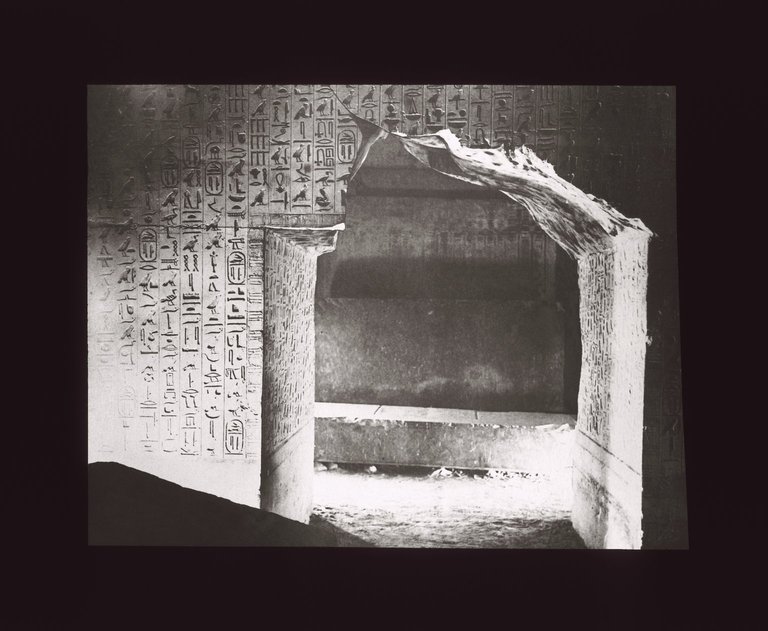The pyramids at Giza, the three monuments built for kings Khufu, Khafre, and Menkaure from c. 2470–2396 BC, have come to symbolise the achievements of ancient Egypt. But the recent opening to the public of the ‘Bent Pyramid’ at Dahshur, 30 km south of Cairo, has brought attention to an important reality: most pyramids aren’t as gigantic as the famous ones at Giza, or as well constructed. Over the years, there was quite a bit of variation and experimentation in their design.
Take, for example, the Step Pyramid of King Djoser (r. c. 2584–2565 BC) at Saqqara, 20 km south of Cairo. This was the world’s first monumental stone building, rising as six steps to a height of 60 metres. According to one theory, the pyramid form was intended to represent the first mound of creation that the Egyptians believed rose from the waters of chaos at the beginning of time. Why huge steps? No one knows for sure, but later religious texts describe the king’s soul ascending to the sky on a stairway or ladder, perhaps offering a clue. Underground, a network of rock-cut tunnels and storage magazines surround the king’s burial vault. Some corridors are decorated with ornate blue faience tiles, representing the reed-matting decoration of contemporary palace chambers.
The Bent Pyramid of Dahshur, photographed in 2015. Photo: Patrick Baz/AFP/Getty Images

Around 35 years after Djoser’s reign, King Sneferu (r. c. 2520–2470 BC) constructed a step pyramid at Meidum, near the Faiyum Oasis, but soon abandoned this plan to start a new pyramid at Dahshur, one designed to have smooth sides – the world’s first true pyramid. There was just one snag: the Egyptians didn’t know how to build a true pyramid. The builders arranged the pyramid’s core blocks with little care on an unstable desert, and angled the slope at 54 degrees. Instability soon forced them to reduce it to 43 degrees, saving the structure and creating a distinctive bend just before its mid-point, hence its modern name: the Bent Pyramid.
Sneferu went on to build the first successful smooth-sided pyramid (the ‘Red Pyramid’) at Dahshur, and even returned to Meidum to transform his early step pyramid into a true pyramid. His workers probably never completed this final task, and at some point in history, the pyramid’s sides collapsed, leaving its stepped core standing like a tower. Sneferu’s son, Khufu, learned from his father’s mistakes when building the Great Pyramid of Giza, perfecting his designs and copying the 51 degree slope of Sneferu’s final pyramid experiment at Meidum.
Pyramids built after the Giza trio tend to be small and similar in design; today, because of degradation over the years, they are often little more than heaps of stone. Rather than building massive pyramids, the Egyptians began to place more emphasis on the decoration of the pyramid’s associated temples – the pyramid of King Unas (r. c. 2312–2282 BC) at Saqqara, for example, was only 43 metres high. The major innovation of this time was the inclusion of the Pyramid Texts on the walls within the pyramid chambers – detailed spells designed to help the king achieve his afterlife among the stars. Except for the few partly decorated corridors in the Step Pyramid of Djoser, earlier pyramid interiors had, on the whole, been left blank, including those at Giza.
A lantern slide showing inscriptions on the walls of the burial chamber of the pyramid of Unas. Brooklyn Museum

Later kings reverted to the tradition of leaving their pyramids’ interior walls undecorated, and cut corners by constructing the cores from mud brick. But what these pyramids lacked in quality, they made up for in complexity. The pyramid of King Amenemhat III (r. c. 1842–1794 BC) at Hawara in the Faiyum Oasis included tunnels leading to dead ends, secret trap doors hidden in the roofs of corridors, and even a false well meant to trick plunderers into thinking the burial was below. Most earlier pyramids lack such Indiana Jones-esque features – a sign that security was now becoming an increasing concern.
In around 1500 BC, after a millennium of experimenting with pyramid design, Egypt’s kings abandoned the use of pyramid tombs in favour of the better protected rock-cut tombs of the Valley of the Kings. But old habits die hard. It may have been a new era in Egyptian history, but this famous royal necropolis was still constructed beneath el-Qurn – a naturally pyramidal peak. Some nobles now included small pyramids atop their tomb chapels, and the tradition of pyramids as royal tombs later re-emerged in Sudan, with the steep-sided pyramids at el-Kurru, Nuri, and Meroe.


